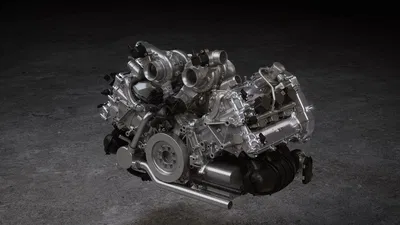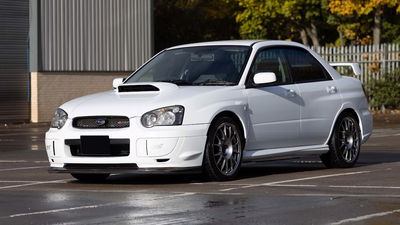V6 Vs Straight-Six: The Pros And Cons Of Each Engine

Six-cylinder engines have long been the heartbeat of some of the world’s most iconic and legendary vehicles. The straight-six engine configuration (also known as an inline-six) has powered icons such as the Jaguar E-Type, Toyota Supra, Nissan Skyline GT-R and BMW M3. Meanwhile, V6 engines have served as the powerplant for heroes including the Honda NSX, Nissan GT-R R35 and Lancia Stratos. Both six-cylinder configurations have left an indelible mark on the automotive landscape.
A few years ago, the straight-six seemed to be fading away, but the configuration has had something of a resurgence, with many manufacturers replacing V6s with them.
So, what is it these car brands have to weigh up when deciding how to arrange their six-cylinder engines, assuming they haven’t done something weird like laying them flat? (We’re looking at you, Porsche).
Here are the pros and cons of each.
Straight-six advantages

Straight-six engines are so named because the cylinders are arranged in a straight line, and make for a clean and straightforward design. The inline configuration eliminates the need for separate heads or valve trains, which are needed with a V-configuration’s cylinder offset. A dual overhead cam inline-six can operate with just two long camshafts to control its valves, while a V6 requires twice as many smaller camshafts. This results in fewer moving parts and, in theory at least, fewer potential issues.
This simplicity makes straight-six engines more accessible for maintenance work, allowing greater access to spark plugs, leads and ancillaries and making the I6 often a better choice for amateur mechanics. However, the most significant advantage lies in engine balancing. The normal firing order of a straight-six ensures that the reciprocating forces balance each other out, resulting in a smooth-revving engine – a trait exemplified by units like the BMW S50 and Nissan RB26.
A lot of modern straight sixes are also modular, developed as part of engine families incorporating inline threes, fours and, of course, sixes. This makes for potentially lower engine costs.
Straight-six disadvantages

Despite its advantages, the straight-six faces several challenges. Packaging has always been an issue, as the extra two cylinders compared to an inline-four engine make it significantly longer. This poses challenges when mounting an I6 in a transverse configuration, especially in a front-wheel drive configuration, where there is often insufficient space for the necessary transmission and drivetrain components. With manufacturers looking to create powertrains that can be shared across as many chassis as possible, the elongated I6 just isn’t quite versatile enough.
The long engine and its components also lack rigidity compared to more compact engine setups. Longer camshafts and crankshafts naturally flex slightly during rotation, and the engine block lacks the stiffness of a V6 equivalent. These factors negatively affect the car’s centre of gravity, with rotating and static mass sitting slightly higher in the engine bay than other more compact engine options.
V6 advantages

The V6 engine configuration means the cylinders are tilted away from each other at an angle, typically in 60 or 90-degree configurations, although there are some curious exceptions like McLaren’s 120-degree V6 and Honda’s 75-degree second-gen NSX V6.
V6s are still prevalent in numerous performance cars thanks to their versatility across a variety of platforms. Turbocharging is highly effective in a V6 to create upwards of 500bhp, and manufacturers frequently offer twin-turbo V6 setups as an alternative to bulkier V8 engines. The Nissan GT-R R35 swapped the straight-six RB26 used in its Skyline predecessors for a 3.8-litre twin-turbo V6, capable of delivering 592bhp in the GTR-Nismo and more than 1000bhp in the hands of tuners.
The compact nature of V6 engines allows them to be easily integrated into a variety of engine bays within a manufacturer’s lineup. This flexibility also enables front-wheel-drive setups to use V6 powertrains, which can lead to some truly epic performance bargains like the MG ZS180 with its Rover KV6 and the Mazda MX-6, which squeezed in a 2.5-litre V6 in its second generation.
V6 disadvantages

Despite having the same number of cylinders as the inline-six, the V6 engine lacks the same inherent balance. Effectively, it consists of two inline threes joined together, requiring balancing shafts with specially placed weights to counteract unwanted inertia. Without these, vibrations would travel through the crankshaft and disrupt the engine’s efficiency.
As displacement increases, along with bore size, more counterweights are needed, further complicating the engine’s design and driving up manufacturing costs. A DOHC V6 requires four camshafts and potentially 24 valves in total, increasing the complexity of the valvetrain components. This can be intimidating for less-experienced enthusiasts working on V6 engines.

While many petrolheads lament the decline of truly exciting straight-six engines, a few recent developments offer some hope. Stellantis introduced a new twin-turbocharged inline-six, called the Hurricane, JLR has returned to using the engine type, and there’s also a straight-six - in petrol and diesel forms - in various new Mazda models including the CX-60.
For the most part, though, the V6 continues to dominate, and given the calibre of performance vehicles powered by this configuration, it's difficult to argue with the performance they offer despite their drawbacks.














Comments
Flat-Sixes are best Sixes!
[DELETED]
I agree
Exactly!
My Camaro thinks differently
Then why does an LS V8 weigh less than a Porsche flat six?
For me the best
Straight 6: E46 M3
V6: Jaguar F-Type
Real industrial, charismatic engines that sound amazing !!!
I’d have to lean RB26DETT for the I6. As for V6, I’m not sure.
Busso V6 is one of the best V6 engines, even though it is quite old. A close second is the Nissan’s VQ lineup (IMO). Powering the Z series and the mighty GT-R.
W16 or nothing
always hyper
But then, how does the 2JZ handle so much power, if the crankshafts and camshafts bend?
The article most likely refers to the stock components. You can get rid of the bending with aftermarket parts
Because in the 80’s and 90’s toyota and nissan were basically measuring dicks
Nissan had the fantastic idea of putting a race bred engine into a road car, (the RB26 was designed and build as a touring car racing engine)
Toyota was having literally none of that so jizzed a crap load of money into making a bigger more powerful engine because that’s just what Japan was like at the time
As a result both of those engines are massively over engineered and capable of handling obscene amounts of power from 20 year old stock components
They likely had designed them in a way to prevent or compensate for any of that flex and bend
well, in stock form S38 from BMW had more POWAAA and are reliable as f*ck: https://www.youtube.com/watch?v=EaHDBjrowJI
depends on which manufacturer you look. Found out chrysler I6 were bad because economy cars….
I’d love to get a i6 in higher specced middle class cars
I’d love to get my hands on a six pot, but don’t really know which. Inline, V, VR. All of them sound absolutely beautiful and I love the idea of less stress in the engine (compared to my turbocharged inline four), when driving down the motorway.
Get the best of both: VR6!
*worst of both
best of both will be a V12 since it can be considered as two I6 or two V6 joined together.
Get the best of both; VR6!
Straight 6 all the way!!! (No bias in my opinion I swear, just ignore the fact that I may own an e46 330)
Yeah but BMW do make pretty epic Straight 6 engines. Even Jag are dropping the V6 for Straight 6!!
i totally agree, straight sixes are the best, no bias from me at all. not one bit. however i do have to disagree on the accessibility of spark plugs, seeing as the back two are almost under our windscreen XD
Pagination